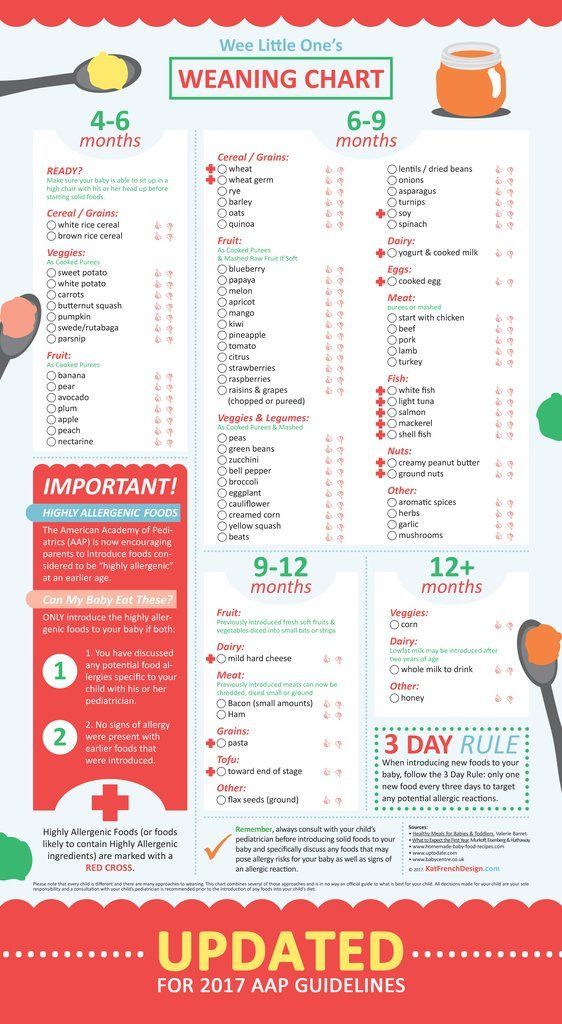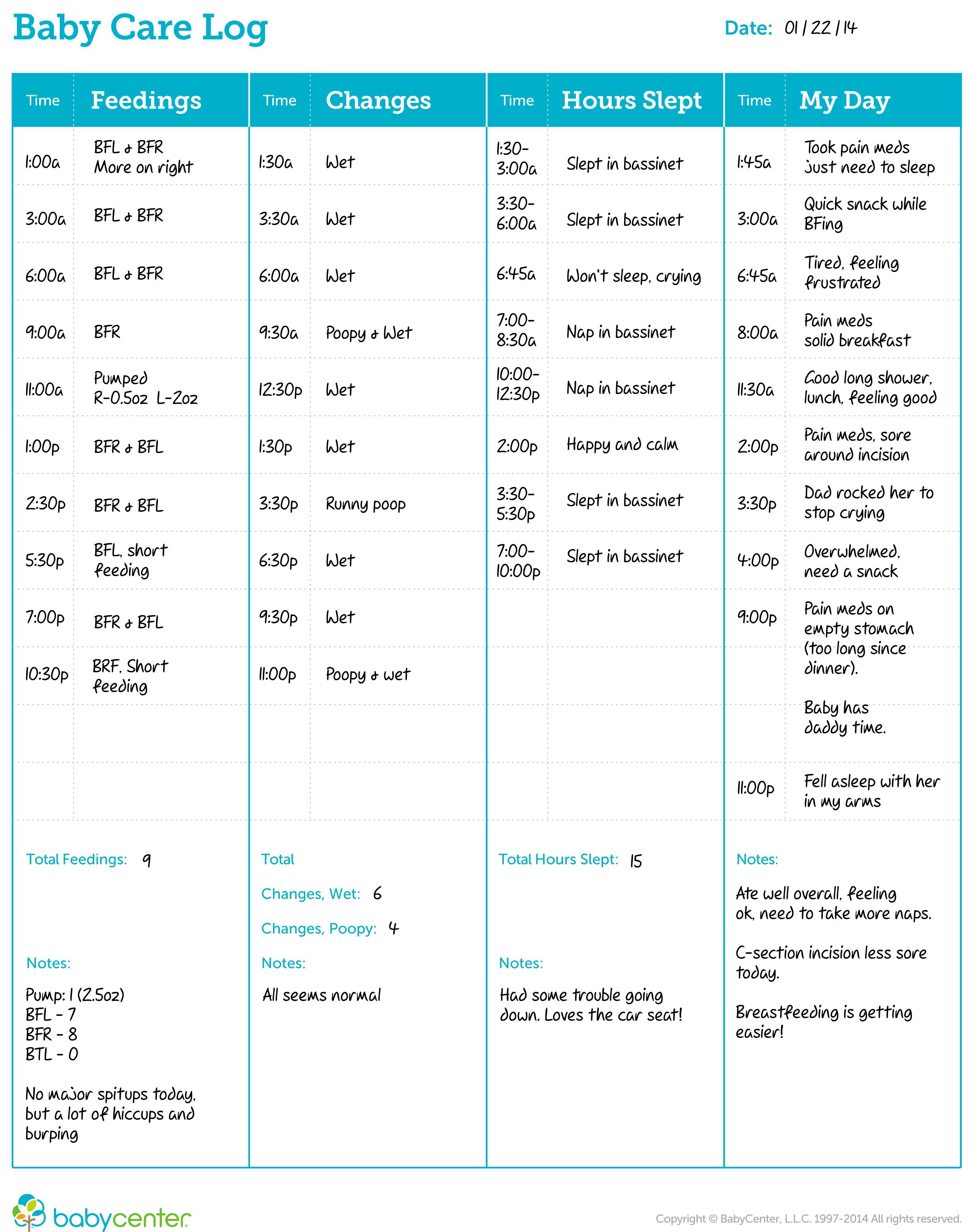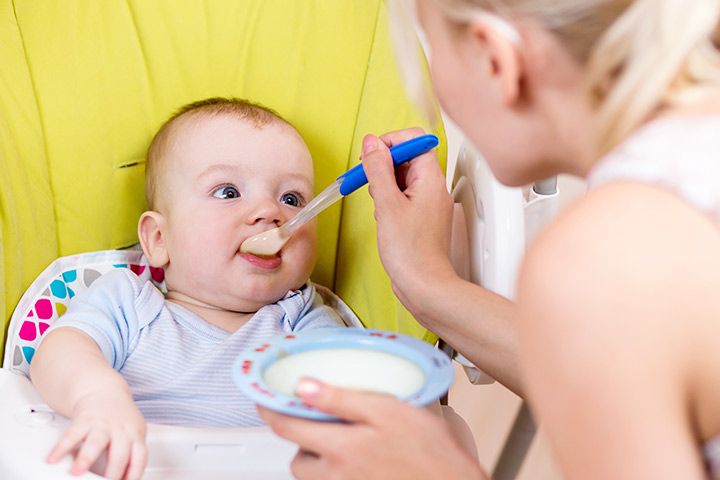Low risk allergy foods for babies
Most & Least Allergenic Foods For Babies With Allergies
Food allergies in babies are something that many parents worry about. Not only are they scary, but they can make introducing solids challenging. Food allergies in babies can also go undiagnosed for quite some time, leaving you confused about what may be leading to the symptoms your baby is experiencing.
While some babies may be at a higher risk of developing food allergies due to family history, some babies may have no greater risk at all and still experience an allergic reaction to certain foods.
In this article, we will explore how to know if your baby is allergic to certain foods and some of the most allergenic and the least allergenic foods for babies. We will also talk about food allergy testing and some steps you can take if your baby suffers from food allergies.
Is My Baby Allergic to Certain Foods?
So, maybe you have been suspecting a food allergy due to certain symptoms your little one is experiencing. Many mommas just have a gut feeling when something isn’t settling well with their child. For some moms, the first indication of a food allergy starts in infancy. If your baby is breastfed and experiences reflux, eczema, blood in their stools, or fussy behavior, there’s the potential for an underlying cow’s milk allergy if dairy is part of the mom’s diet. The dairy can pass through breast milk and cause allergic symptoms in a baby with a cow’s milk allergy.
Other babies don’t develop symptoms until moms start introducing solid foods.1 Again, gastrointestinal symptoms can arise, as can fussiness and irritability, eczema, and even some life-threatening reactions like anaphylaxis shock. There’s also a condition called FPIES which stands for Food protein-induced enterocolitis syndrome, which is a rare but severe food allergy that affects the gastrointestinal system. An FPIES reaction can cause intense vomiting, diarrhea, and even shock.
If your baby is experiencing any of these serious and potentially life-threatening allergic symptoms, it is crucial to get immediate medical attention and then follow up with a pediatric allergist to help identify the exact food or foods causing these symptoms.
Some other commonly seen symptoms of food allergies in babies include:8
- Coughing
- Wheezing
- Difficulty breathing
- Swelling or itching of the lips, tongue, or mouth
- Itching or tightness in the throat
- Eczema
- Hives
Introducing Solid Foods to Babies with Food Allergies
If you suspect your baby suffers from food allergies or your baby has already been diagnosed, introducing foods can be challenging. However, working with a pediatric allergist can help you develop a safe plan for solid food introduction. It may also help to know the least allergenic foods for babies as these foods are less likely to trigger an allergic reaction. However, keep in mind that every baby is different, and a baby can be allergic to any food, whether it’s on this list or not! This is especially true for babies suffering from FPIES, so always speak with your doctor first.2
Keep reading because we will take a look at some of the least allergenic foods and the most allergenic foods in babies.
Understanding Allergies in Babies
Before we jump into the foods you will want to watch out for, there are some surprising statistics about infant food allergies that are important for every parent to know about. According to the Food Allergy Research and Education organization, 1 in 13 children have food allergies, and 30% of them are allergic to more than one food.3
Food allergies in children are also skyrocketing. The CDC has estimated that food allergies in children have jumped up by 50% from the years 1997-2011.4 That’s a massive jump and something we need to be paying more attention to.
Many parents also wonder if their babies will outgrow their allergies. While many pediatricians tell parents that babies generally outgrow allergies to milk, the FARE (Food Allergy Research & Education) states that allergies to milk, eggs, wheat, and soy are generally resolved in childhood.5 Still, children are starting to outgrow these allergies at a much slower rate than what had previously been documented. This means that many children over the age of five have still not outgrown these allergies. Allergies to foods like peanuts, tree nuts, fish, and shellfish are generally not outgrown, and the child will likely have an allergy to these foods lifelong.
This means that many children over the age of five have still not outgrown these allergies. Allergies to foods like peanuts, tree nuts, fish, and shellfish are generally not outgrown, and the child will likely have an allergy to these foods lifelong.
Another interesting area of research has shown that the season your baby is born may also play a role in their risk of developing a food allergy. Interestingly enough, a study found that babies born in Boston in the fall or the winter were more likely to have food allergies.6 So, what does this have to do with? It was hypothesized that this likely had to do with low UVB exposure and not enough vitamin D. This one study concluded that changes in exposure to sunlight and vitamin D might play a role in the development of childhood food allergies.6 Interesting, right?
Least Allergenic Foods for Babies
Now that we know a little more about food allergies in babies, let’s take a look at some of the least allergenic foods for babies. According to Dr. Sears, some of these foods include apples, avocados, broccoli, peaches, carrots, asparagus squash, sweet potatoes, rice, oats, chicken, turkey, lamb.7
According to Dr. Sears, some of these foods include apples, avocados, broccoli, peaches, carrots, asparagus squash, sweet potatoes, rice, oats, chicken, turkey, lamb.7
Apples
Homemade applesauce is often the very first food for babies. It is full of vitamin C and naturally sweet, so babies tend to love it! You can try using different varieties of apples to introduce new flavors. Homemade applesauce is also great for mixing with other fruits as well such as mangos and peaches.
Peaches
Another great fruit to start with are peaches. They are very sweet and can easily be made into a purée. They are also high in vitamin E, K, folate, and potassium.
Avocados
Avocados are another great first food. They are very high in monounsaturated healthy fats, rich in magnesium and fiber, and can be mashed for babies. Babies generally enjoy the mild flavor.
Broccoli
Broccoli makes for a great first veggie. You can purée broccoli with some chicken broth for added flavor to provide your little one with fiber, folic acid, vitamin K, and C.
Carrots
Carrots are often a go-to veggie for parents. They have a mild but sweet flavor that most babies enjoy. Carrots can be puréed for little babies and then steamed and served with chicken or turkey for older babies ready for finger foods. They are rich in beta-carotene, fiber, vitamin K, and potassium.
Squash
Butternut squash is a delicious vegetable to introduce your baby to. It makes a yummy purée and is packed full of fiber and vitamin B6.
Sweet Potatoes
If your baby likes butternut squash, they will likely enjoy sweet potato too. Sweet potatoes are rich in calcium, selenium, and B-vitamins making them an excellent addition to your little one’s diet.
Rice & Oats
Many parents start with rice or baby oat cereal when starting solids. They are often fortified with iron and folic acid, but rice and oats are great additions in their whole and natural state when baby is older. Rolled oats mixed with banana and molasses is a great breakfast option for an added fiber and iron boost, and rice served with a protein like chicken or turkey also makes for a well-balanced meal for older babies who are ready for more solid foods.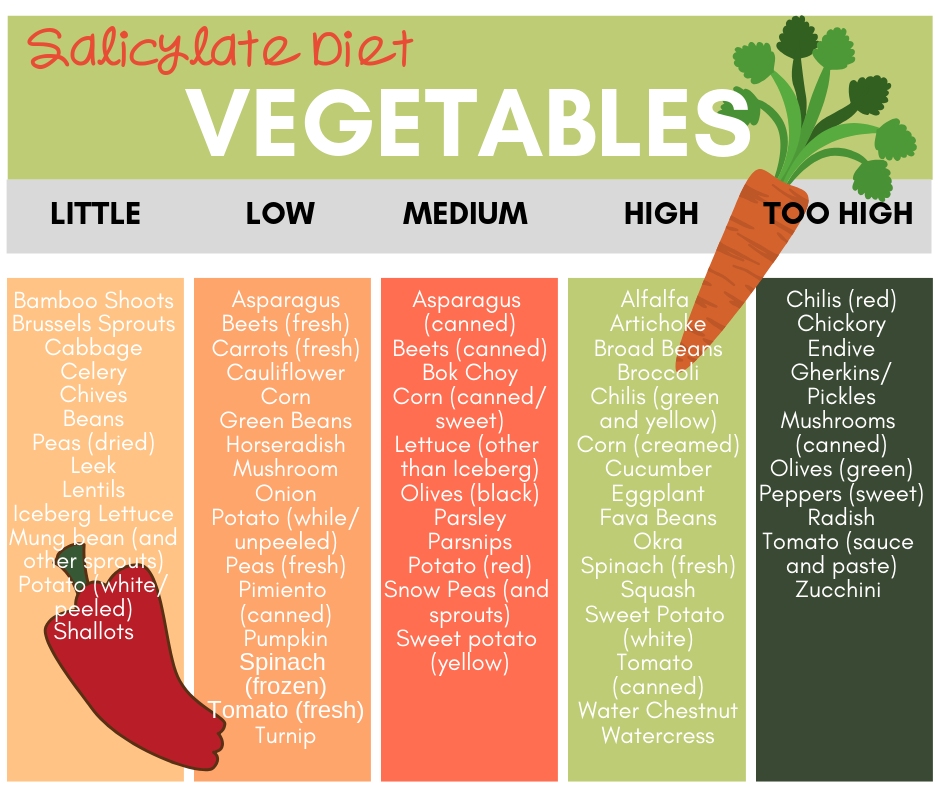
Proteins
Chicken, turkey, and lamb are generally considered to be low-allergenic foods for babies. If tolerated, these proteins can be alternated in your baby’s diet and served with a veggie and carbohydrate for a balanced meal.
Most Allergenic Foods for Babies
While some foods are generally well-tolerated, a handful of foods are commonly known to trigger allergic reactions. According to Dr. Sears, some of the most allergenic foods for babies include:7
- Peanuts
- Nuts
- Coconut
- Eggs & egg whites
- Dairy
- Soy
- Wheat
- Shellfish
- Yeast
- Citrus fruits
- Corn
- Peas
- Tomatoes
- Pork
- Mustard
- Cinnamon
- Chocolate
- Berries
- Buckwheat
If your child suffers from food allergies, it may be best to avoid these foods until you work with an allergist to determine a plan to avoid introducing foods your child may react to.
What to Do If You Suspect a Food Allergy
So, what do you do if you suspect your baby has a food allergy? First, you will want to avoid that food. Do not introduce the suspicious food or any other highly allergenic foods to your baby’s diet until you speak with your pediatrician.
There are also specific food allergy tests a pediatric allergist can perform to really pinpoint what foods are causing issues. These tests include a skin prick test which is often combined with blood work.
While baby food allergies are very scary, working with the right medical team and knowing exactly what foods to avoid can help make the transition to introducing solid foods a little less stressful.
References:
1. https://www.webmd.com/
2. https://www.healthline.com/
3. https://www.foodallergy.org/101-825/
4. https://www.cdc.gov/db121.pdf
5. https://www.foodallergy.org/136-11p/
6. https://www.ncbi.nlm.nih.gov/PMC2941399/
7.
 https://www.askdrsears.com/
https://www.askdrsears.com/8. https://www.hopkinsmedicine.org/
Common food allergens and kids
Share:
Sharing new foods with your baby is an exciting milestone. Unfortunately, amongst the fun of watching your child experience new tastes remain questions and fears about food allergies. Recommendations of when to introduce certain foods seem to change often, and for many parents, it can be confusing to know what is best for your child at each age.
April Clark, registered dietitian with the Food Allergy Center at Children’s Health℠, offers tips on when and how to introduce the top allergenic foods.
How to decrease the chance of food allergies in kids
The eight most common food allergens include: cow’s milk, eggs, peanuts, soy, tree nuts, finned fish, shellfish and wheat (gluten). According to the FDA, they account for approximately 90% of all food allergies in the United States.
Previously, the American Academy of Pediatrics (AAP) recommended that the introduction of certain highly allergenic foods be delayed in high-risk children. However, the AAP now recognizes that early introduction of peanuts decreases the chance of developing peanut allergies. Clark recommends following new guidelines to slowly introduce allergenic foods after the addition of solid foods, which often occurs during a baby’s first 4 to 6 months.
However, the AAP now recognizes that early introduction of peanuts decreases the chance of developing peanut allergies. Clark recommends following new guidelines to slowly introduce allergenic foods after the addition of solid foods, which often occurs during a baby’s first 4 to 6 months.
Tips on introducing new foods
Clark recommends that any of the foods noted below should be introduced one at a time, and parents should carefully observe their child’s reactions. Foods should first be given as single ingredients – not as part of a recipe like eggs in a baked good. They can also be given with complementary fruits and vegetables that have already been proven safe.
If there isn’t an allergic reaction once a food is introduced, continue including it at least three times a week in your child’s meals to ensure the best results. There isn’t a firm deadline to stop serving the foods. Instead, Clark notes that a healthy, well-balanced diet should normally contain variations of these common foods.
- Cow’s milk (dairy) may be one of the first allergies to be noticed, as many formulas are made with milk. Unlike the other foods listed, experts recommend waiting until after age 1 to introduce cow’s (whole) milk into a child’s diet. Instead, Clark notes babies eating solid foods should try yogurt or cheeses.
- Eggs are an excellent source of protein for growing children. Clark recommends either scrambled eggs or pieces of hard-boiled eggs. Depending on the child, they may enjoy the squishy texture and prefer to feed themselves.
- Peanuts or peanut butter are another reliable source of protein. Do not give whole or even peanut pieces, as they can be a choking hazard; instead, peanut butter is a safer alternative, but the thick consistency can be difficult for most children to swallow. Clark recommends melting down the peanut butter with warm water or adding it to a fruit or veggie puree. If a child has severe eczema, and/or already has been diagnosed with egg allergy, they should be evaluated prior to peanut introduction.
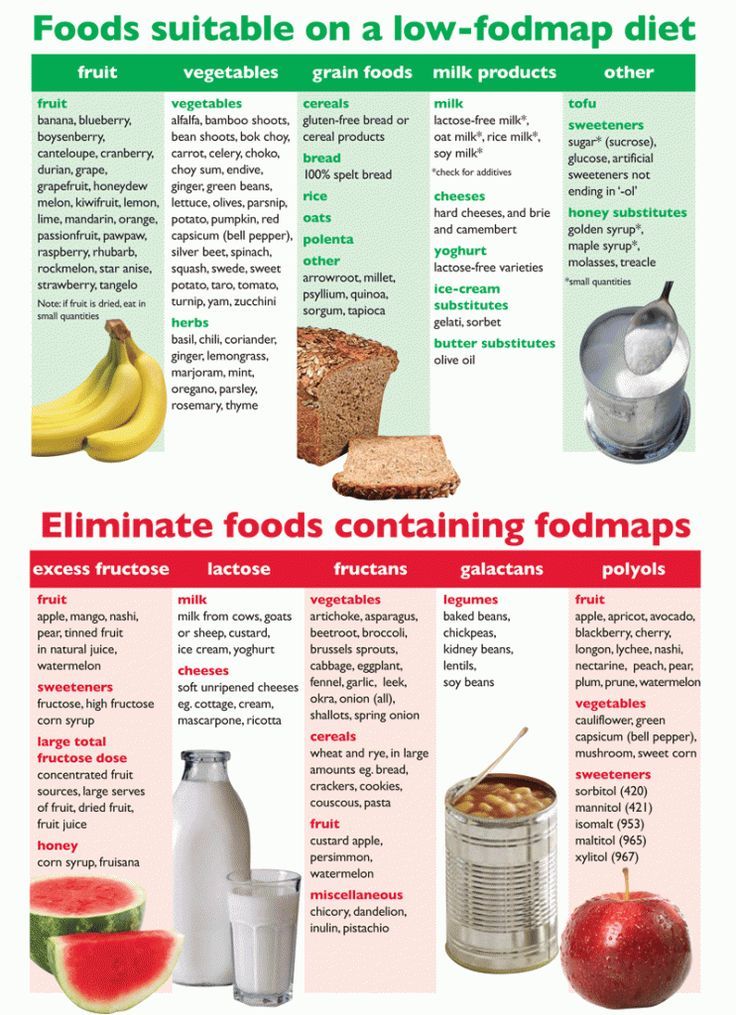
- Soy is another allergy that is noticed early due to formulas with a soy base. Protein-packed tofu and edamame (soy beans) can be introduced when your child is ready. They are great options for self-feeding. Like cow’s milk, Clark says parents should not offer soy milk until after age 1.
- Finned fish and shellfish (shrimp, crab, clams, etc.) can be introduced as a puree around the 4 to 6-month mark, or in bite-size pieces once your child is ready. In addition to possible allergies, the AAP warns parents not to serve raw or undercooked items due to possible bacteria or viruses that can make your child seriously ill. Also, the AAP notes children shouldn’t eat more than 12 ounces of fish a week due to concerns about traces of mercury in fish or shellfish.
- Tree nuts (almonds, cashews or walnuts) follow the same guidelines as peanut and peanut butter above.
- Wheat (gluten) can be introduced as finger foods in teething biscuits, puffs and crackers that contain wheat.

Signs of a food allergy
Clark notes children with a first-degree relative (parent or sibling) with allergies are more likely to also have food allergies. Children (and their parents) who have a history of severe or recurring eczema and/or asthma are also at a higher risk to develop food allergies. If your child has any of these factors, you many want to consult your pediatrician for guidance on the best way to proceed.
Allergy symptoms and reactions can vary between children and may appear differently, depending on the age. Reactions can develop minutes after the food is ingested, or there may be a delayed reaction a few hours later. Clark cautions anyone can have a severe reaction at any time, and recommends following guidelines developed by Food Allergy Research & Education (FARE) to identify an allergic reaction. See FARE's list of symptoms here.
What to do if an allergic reaction occurs
Contact your pediatrician if your child has a mild allergic reaction and it is not an emergency. Call 911 immediately for severe and life-threatening reactions.
Call 911 immediately for severe and life-threatening reactions.
If you suspect your child has a food allergy, Clark recommends seeing a board-certified allergist to discuss your concerns. Bring any information about the food, the reaction and your family history to the appointment. The physician will likely take a detailed medical and diet history, and recommend appropriate testing that’s specific to your child’s symptoms and suspected food allergens. Your allergist will be able to manage the diagnosis and answer any questions. Specialists can also provide useful information like recipes and food allergy guidelines.
Download your guide to allergen-free lunches
Looking for tips to pack allergy-friendly school lunches? Download the Parents' Guide to Allergen-Free Lunches for kid-friendly recipes that are free of the top eight food allergens. Download now.
Learn more
Food allergy experts at Children’s Health can help with testing, questions and offer patient resources. Learn more about our program and services.
Learn more about our program and services.
For more information, please see the following additional references:
- Food Allergy Research & Education (FARE)
- Instructions for feeding peanut butter and recipes
- Additional information about introducing peanut butter
- LEAP study in the U.K. (Learning Early About Peanuts)
- Recommendations from the AAP for introducing food
Thank you!
You are now subscribed to the Children's Health Family Newsletter.
Children's Health will not sell, share or rent your information to third parties. Please read our privacy policy.
Children's Health Family Newsletter
Get health tips and parenting advice from Children's Health experts sent straight to your inbox twice a month.
Please enter a valid email address
6 food allergens that should not be given to a child
Other related articles: pediatrician, proper nutrition
-
adenovirus infection
-
Adenoids
-
Autism
-
Autism (RAS)
-
Bronchitis in children
-
Chickenpox
-
windmill parties
-
coxsackie virus
-
Questions to the pediatrician
-
All about diets
-
Flu and SARS
-
Breast milk
-
Dacryocystitis
-
Children's painkillers
-
Diet for nursing
-
Medical examination at 1 year
-
Diphtheria in children
-
For expectant mothers
-
hardening
-
Hardening of children
-
Constipation in children
-
Foreign body of the bronchi
-
Infectious mononucleosis
-
Whooping cough
-
Measles in children
-
Rubella in children
-
Deprive a child
-
false croup
-
Tangerines for children
-
Children's massage
-
Meningococcal infection
-
Pediatrician at home
-
First year of life
-
Baby's first year
-
Nutrition for children 1-3 years old
-
Child nutrition
-
food allergy
-
Defeat the Flu
-
Preparation for vaccination
-
Complementary foods for children
-
Child's bite
-
Walks in the cold
-
Products for longevity
-
Allergen products
-
Teething
-
Rickets in children
-
Child is sick
-
Rotavirus infection
-
mumps in children
-
Scarlet fever in children
-
Sleep with animals
-
Baby care
-
Phytotherapy in children
-
Enuresis
Any food is capable of causing an allergic reaction, and we cannot exclude absolutely everything.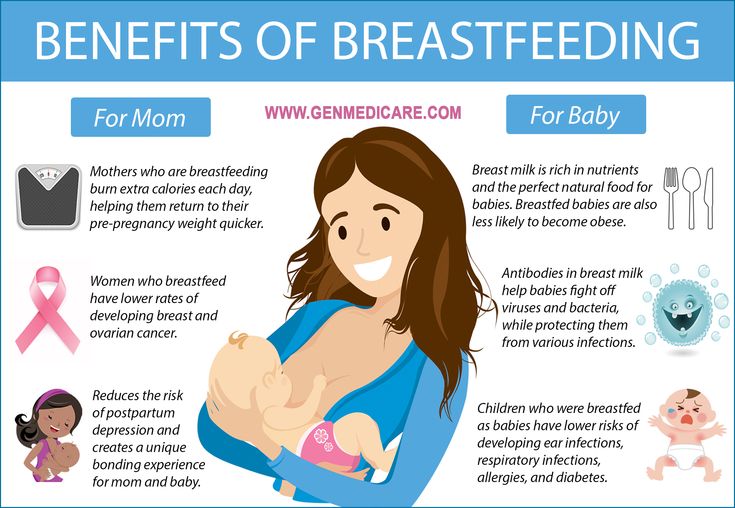 But when we talk about food allergies, we immediately remember the big eight allergens:
But when we talk about food allergies, we immediately remember the big eight allergens:
- Eggs
- Milk
- Soya
- Peanut
- Nuts
- Wheat
- Fish
- Mollusks and crustaceans
Let's take a look at each product individually.
So, eggs. Eggs are recommended to be introduced into the diet from 6-8 months of age. Only fully cooked eggs should be given to children.
Milk. Milk is not recommended for children under one year of age. After a year and up to 5 years, you can include milk in the menu daily.
Soy. Soya is also recommended for consumption from one year. It is worth recalling that any plant milk is not a complete replacement for regular cow's milk.
Peanuts. Peanuts are a common allergen in many developed countries. At the same time, there are a large number of studies that have shown that the introduction of peanut butter at the age of 4-6 months reduces the risk of developing an allergy to it at an older age. So peanut butter can be consumed from six months.
So peanut butter can be consumed from six months.
Nuts. Nuts are introduced into the diet from the year. It must be remembered that whole nuts or peanuts should not be given to children under five years of age due to the high risk of suffocation.
Wheat. Introduced into the diet from 8-10 months in the form of cereals, pasta, bread, baby cookies.
Fish. We add it to the child's diet from 8-10 months, starting with white fish, from the year you can start introducing red.
Mollusks and crustaceans. "Seafood" can be introduced into the diet of a child from the age of one. The main thing is that they are thermally fully cooked.
Thus, all the most important food allergens of this world can and should be consumed. If you suspect that your child is allergic to any product, you should consult a doctor to understand this issue. But you definitely shouldn’t exclude entire food groups from your child’s diet, since the most varied diet is the key to good health.
To be fair, there are also foods that contain high levels of histamine or cause it to be released in the body. When eating large amounts of these foods, some children may experience an allergic-like reaction. But this is not a true allergy, and the effect in this case is dose-dependent, that is: if a child eats two tomatoes, and not a kilogram, then nothing will happen.
These products include:
- Eggplant
- Tomatoes
- Pineapple, plum, banana, papaya, kiwi
- Almost all citrus fruits: lemon, lime, orange
- Pickled or preserved foods
- Hard cheeses, aged cheeses
- Smoked products, deli meats: salami, ham, sausages
- Shellfish, seafood
- Beans and legumes, chickpeas, soy flour
- Hazelnuts, walnuts, pine nuts, peanuts, cashews, almonds, pistachios
- Chocolate and other cocoa products
- Most vinegars
If you notice a reaction to any of the above foods, you can try reducing the amount in your diet and find a dose that your child can tolerate.
Food allergy is not that common in practice. This disease occurs in 6-8% of children and 3% of adults. At the same time, most children “outgrow” their allergies, and in adulthood they can safely eat foods previously excluded from the diet.
Still, there is something that should be excluded from the child's diet:
- Sugar up to two years. WHO clearly does not recommend foods containing added sugar for children under two years of age. After two years, it is worth focusing on age norms.
- Salt. It is not recommended to add it to the diet before 9 months. Up to three years - no more than two grams per day. Older than three years - no more than five.
- Honey up to a year. This is not due to its allergenicity, but to the risk of containing spores of the bacterium that causes botulism.
- Nuts, peanuts, whole grapes. Young children are at risk of suffocation with these products.

- Caffeine up to 4-5 years. Not recommended due to its stimulating effect.
- Rice milk up to 5 years. This milk may contain a high concentration of arsenic. This does not apply to rice itself and dishes from it.
- Trans fats. They are not recommended for children, as well as adults, because they increase the risk of CVD, a carcinogenic effect.
- Unwashed vegetables, raw eggs, meat.
- Products with a large amount of preservatives, dyes. It is not recommended to use up to 5-7 years, after - their content in the diet should be minimized.
In summary, we can say that there are no allergenic foods that need to be excluded from a child's diet. The diagnosis of food allergy is confirmed by the doctor, he also recommends a certain diet. And trying to delay the introduction of the most common allergens is not food allergy prevention.
Make an appointment with a pediatrician
For more details, consult a qualified specialist at the Semeynaya clinic.
To find out the prices for a pediatric appointment or other questions, follow the link below:
Labels Proper nutrition Pediatrician
low-allergenic cereals for children, weekly menu
Published: 12/30/2021
Reading time: 7 min.
Number of reads: 35941
Author of the article: Ponomareva Yulia Vladimirovna
Pediatrician, Candidate of Medical Sciences, Allergist-Immunologist
It is difficult to find a modern person who has not heard about allergies. Unfortunately, in recent decades, developed countries have seen a significant increase in the spread of allergic diseases. Why this happens is not completely known, but a possible reason is living in the technogenic environment of large cities and the distance of a person from nature. Allergy symptoms often begin in early childhood. According to statistics, every fifth baby in the first year of life develops atopic dermatitis - the first manifestations of allergic reactions. Skin rash with disturbing itching, disruption of the gastrointestinal tract are symptoms of a food allergy. If this condition is not recognized and treated in time, the disease can progress in the future, and also take other forms - with the development of rhinitis and bronchial asthma.
Allergy symptoms often begin in early childhood. According to statistics, every fifth baby in the first year of life develops atopic dermatitis - the first manifestations of allergic reactions. Skin rash with disturbing itching, disruption of the gastrointestinal tract are symptoms of a food allergy. If this condition is not recognized and treated in time, the disease can progress in the future, and also take other forms - with the development of rhinitis and bronchial asthma.
When to start complementary foods
After birth, it is very important for a mother to establish natural feeding and breastfeed her baby for at least 6 months, as well as to properly expand his diet with complementary foods. Many parents also have a different opinion that there is no need to introduce additional food to the baby in the first six months of life, that he gets everything he needs from mother's milk. This is not a completely correct judgment. Indeed, up to 4 months, the child needs only mother's milk, which covers all needs, and his body is not yet ready to absorb other food. Then the baby already needs additional intake of nutrients, vitamins and minerals that complementary foods can provide. In addition, from the point of view of preventing the development of allergies, it is very important during this period (4–8 months) to introduce all the main food groups in order to form a normal tolerance for this food for the rest of a person’s life. In scientific language, this period is called the window of tolerance.
Then the baby already needs additional intake of nutrients, vitamins and minerals that complementary foods can provide. In addition, from the point of view of preventing the development of allergies, it is very important during this period (4–8 months) to introduce all the main food groups in order to form a normal tolerance for this food for the rest of a person’s life. In scientific language, this period is called the window of tolerance.
The first manifestations of allergy most often occur in the 3-5th month of life. For many babies, this is due to the introduction of new products. Therefore, it is necessary to both follow the recommendations for choosing a food group to start complementary foods, and choose the safest options within a food group. A hypoallergenic menu for a child involves the initial introduction of a monocomponent dish, that is, prepared on the basis of one main product, without the addition of sugar, salt and other additives. The initial portion is only a few tablespoons, then the child must be supplemented with breast milk or the usual adapted mixture, which he tolerates well. For two days, carefully monitor all possible changes in the baby's health. If a child develops symptoms such as skin rashes, regurgitation, stool disturbances, or increased colic, the administration of this product should be suspended until a discussion with the pediatrician about its further use. With good tolerance, the volume of the dish during the week increases to the recommended amount at this age. After a few days, you can continue to expand the diet.
For two days, carefully monitor all possible changes in the baby's health. If a child develops symptoms such as skin rashes, regurgitation, stool disturbances, or increased colic, the administration of this product should be suspended until a discussion with the pediatrician about its further use. With good tolerance, the volume of the dish during the week increases to the recommended amount at this age. After a few days, you can continue to expand the diet.
Getting Started Right
It is currently not recommended to start expanding your diet with fruit purees and juices, traditional first foods of the past. This is due to frequent allergic reactions to the fruit component at this age, as well as the high acidity of these products, which can cause disruption of the gastrointestinal tract. It is best to introduce this food group after 6 months. A possible choice as the first food on a hypoallergenic menu would be green vegetables such as zucchini or cabbage. This group is especially attractive in infants with high weight gain and functional digestive disorders with a tendency to stool retention.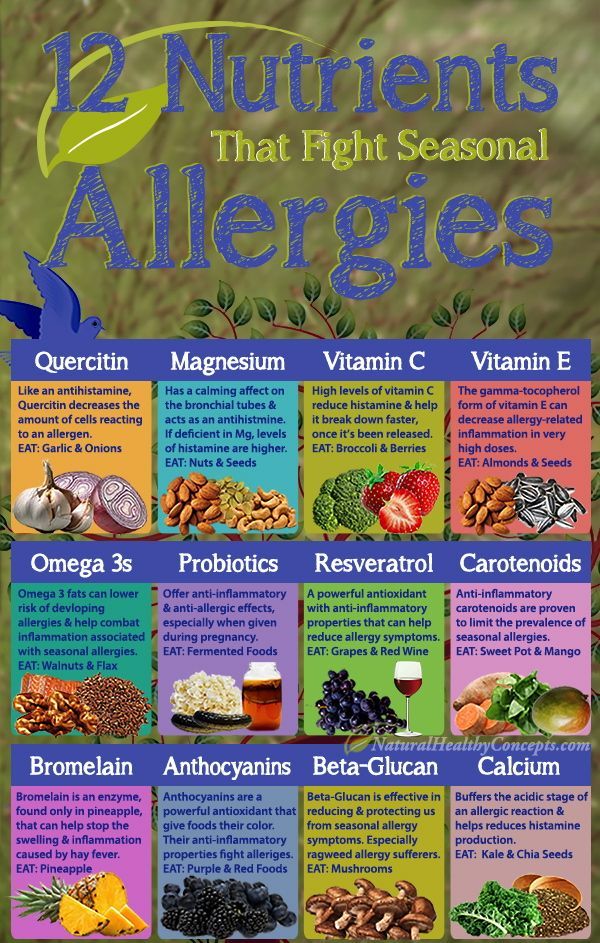 However, vegetables have low nutritional value and do not adequately compensate for the growing energy needs of the baby.
However, vegetables have low nutritional value and do not adequately compensate for the growing energy needs of the baby.
The right start - grains
Grains are the preferred starter choice for both healthy babies and those at risk of developing allergies. Porridge is a highly nutritious product, a source of complex carbohydrates, dietary fiber, fats and protein, as well as essential vitamins and minerals. One serving of this dish has a high energy potential, covering a third of the daily need for energy and nutrients. Therefore, at the initial stage of expanding the diet, the role of grain-based products is especially great. Among the variety of cereals, low-allergenic cereals are buckwheat, rice and corn. These cereals do not contain the protein gluten, which is a common culprit in allergic reactions. Therefore, it is recommended to start complementary foods with dishes based on these grains.
Dairy-free porridge
The most common cause of food allergy in the first year of life is cow's milk protein. Therefore, in the hypoallergenic menu, the first cereals should be dairy-free. However, to increase the biological value of the product, this dish can be prepared on the basis of breast milk or the usual adapted mixture. Dairy-free low-allergenic baby cereals of industrial production of the Bebi Premium line are ideal in this case. They are easily bred in mother's milk, do not require boiling, which allows you to preserve all the most valuable as much as possible. In addition, you can be sure of the environmental and food safety of the product. All products undergo a thorough control of raw materials, and this line is made on a separate gluten-free production line. Another distinctive feature of low-allergenic Bebi Premium cereals is enrichment with prebiotics, which affect the functional activity of normal intestinal microbiota and directly on intestinal immune cells. This has a complex effect on reducing the risk of developing allergies.
Therefore, in the hypoallergenic menu, the first cereals should be dairy-free. However, to increase the biological value of the product, this dish can be prepared on the basis of breast milk or the usual adapted mixture. Dairy-free low-allergenic baby cereals of industrial production of the Bebi Premium line are ideal in this case. They are easily bred in mother's milk, do not require boiling, which allows you to preserve all the most valuable as much as possible. In addition, you can be sure of the environmental and food safety of the product. All products undergo a thorough control of raw materials, and this line is made on a separate gluten-free production line. Another distinctive feature of low-allergenic Bebi Premium cereals is enrichment with prebiotics, which affect the functional activity of normal intestinal microbiota and directly on intestinal immune cells. This has a complex effect on reducing the risk of developing allergies.
Severe allergens
Almost any food can cause an allergic reaction. However, 90% of food allergies are caused by eggs, mammalian milk, soy, peanuts, fish, and wheat.
However, 90% of food allergies are caused by eggs, mammalian milk, soy, peanuts, fish, and wheat.
Whole cow and goat milk. It must be excluded from the baby's diet at least until the end of the first year of life. But, if the child has no manifestations of allergies, and there is only a risk of its development, it is possible from 8 months to carefully try to introduce specialized sour-milk drinks and children's cottage cheese into the diet.
Wheat-based dishes. It is possible to start including them in the diet after 6 months as part of dairy-free products.
Eggs. Yolk can be started at 8-9 months of age, but protein only for children over one year old.
Fish. It is also a very strong allergen, therefore, in the hypoallergenic menu, the timing of its introduction is also shifted to a later time.
All multi-ingredient meals can be prepared only if you are sure that the baby tolerates each of the ingredients well separately.